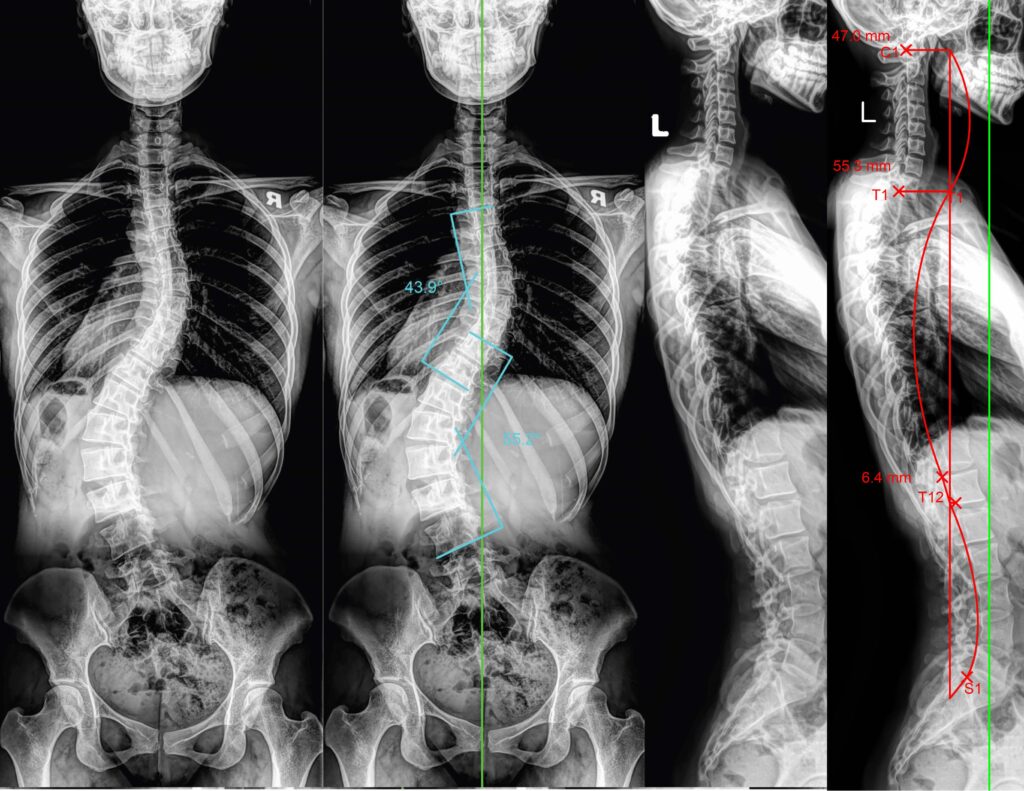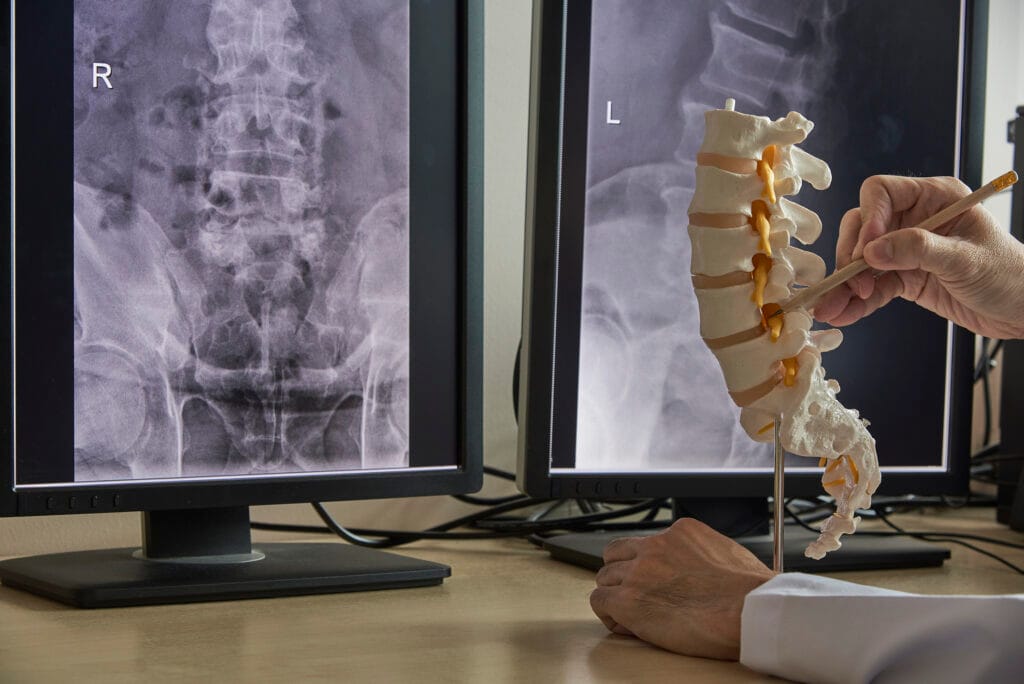The Real Reason X-rays Are Important in Chiropractic Care
When most people think about chiropractic care, they picture quick adjustments, some “cracking,” and maybe a little relief for back or neck pain. Here’s the truth: real chiropractic care isn’t guesswork. Which is why chiropractic x-rays are an essential step of the process.
At Osso Bone Care, we believe in treating with clarity, not assumptions. Because when it comes to your spine, what you can’t see could be the very thing standing between pain and recovery.
X-Rays Reveal the Truth Beneath the Pain
When it comes to spinal health, appearances can be deceiving. Patients may present with back pain, stiffness, or limb numbness that seems musculoskeletal in origin, but these symptoms often mask deeper, more complex pathologies. The human spine is a structurally and functionally intricate system, made up of vertebrae, intervertebral discs, ligaments, and neural pathways. Even subtle disruptions in this system can produce significant clinical consequences. This is where X-rays become an indispensable diagnostic tool.
Misalignments and Biomechanical Stress

Vertebral misalignments are not always detectable through physical examination alone. A patient may exhibit mild discomfort or postural imbalance, but the underlying issue could involve angular deformities and rotation, or uneven pressure across the spinal joints.
X-rays provide the ability to measure these structural discrepancies with precision, offering visual confirmation of abnormal curvatures such as scoliosis, hyperlordosis, or kyphotic deformities. Left undetected, these misalignments can accelerate degenerative changes and increase the risk of affecting the nerves.
Disc Degeneration and Reduced Mobility
Degenerative disc disease (DDD) is one of the most common spinal conditions, affecting up to 40% of adults over 40 years old according to global studies. Intervertebral discs gradually lose hydration and elasticity, reducing their ability to cushion spinal movements.
X-rays can reveal hallmark signs of degeneration, including disc space narrowing, bone spur formation, and endplate sclerosis. Clinically, these changes may manifest as stiffness, limited range of motion, or radicular symptoms (pain radiating to the limbs). Without imaging, disc degeneration may be misattributed to simple muscle strain, delaying intervention and allowing irreversible damage to progress.
Silent Fractures and Compression Injuries
Spinal fractures are not always dramatic or immediately symptomatic. In elderly patients, for example, osteoporotic vertebral compression fractures may occur with minimal trauma and present only as vague backache.
Yet, these fractures can compromise spinal stability, alter posture, and increase the risk of future fractures. Plain X-rays remain the first-line imaging method for identifying vertebral collapse. Detecting such injuries early is critical—not only to prevent further collapse but also to ensure that chiropractic adjustments are safe.
Early Detection of Arthritis and Bone Spurs
Arthritic changes in the spine, such as spondylosis and facet joint arthropathy, develop slowly over time but can significantly impact quality of life. Bone spurs may affect the nerves, leading to radiculopathy (nerve compression symptoms). X-rays can detect these early structural changes before they produce severe symptoms.
Identifying arthritis at an early stage allows for conservative management strategies like targeted chiropractic adjustments, physiotherapy, and lifestyle interventions to slow progression and preserve mobility.
Why This Matters in Chiropractic Care
By integrating X-rays into chiropractic assessment, chiropractors move from speculation to evidence-based care. The images provide a roadmap, guiding safe adjustments, preventing contraindicated manipulations, and ensuring that treatment plans are tailored to the patient’s specific anatomical realities.
The Important People Behind Every X-ray Image
Most patients don’t think about the person behind the X-ray machine, but radiologic technologists (radiographers) are the backbone of accurate diagnosis. They’re not just pressing buttons, they’re highly trained professionals who know how to balance safety, precision, and patient care.
Every day, they work around radiation exposure, manage high patient loads, and sometimes even continue working through their own health challenges or pregnancies. They’re the ones making sure every scan is precise so that chiropractors and doctors don’t have to guess when planning your care.
Why Full Spine X-rays Matter for Chiropractic Treatment
A full spine and pelvic X-ray gives us a complete picture of your body’s structure and alignment. Not only does it spot obvious breaks, it can map out subtle misalignments, measure disc spaces, assess how the spine bears weight. Most importantly, it allows us to evaluate the full spinal structure as one interconnected system — from the neck down to the pelvis — so we can see how one problem area may be affecting the rest of the spine.
Beyond this, here’s what makes full spine + pelvic imaging especially indispensable:
- Reveal compensatory changes and patterns
When one segment shifts or degenerates, the rest of the spine often compensates. An X-ray shows how nearby vertebrae tilt or rotate to adapt—information that’s critical to creating a safe and effective treatment plan. - Identify zones of weakness or degeneration
Subtle reductions in disc height, lumbar flattening, spondylolisthesis (vertebra slippage), or early signs of arthritis can often be missed with physical exams alone. Full spinal imaging gives visibility into all spinal levels so nothing is overlooked. - Guide force and technique selection
Knowing the full structural picture helps your chiropractor decide how much pressure to apply, where to be careful, or when to use gentler techniques. For example, if the pelvic region is tilted, applying force to the lumbar spine without considering that tilt could worsen alignment. - Uncover asymmetries that fuel recurring pain
You might feel pain in one area, but the underlying cause could be elsewhere. For example, a rotated pelvis or leg length difference may place uneven stress on your lower back. With a full spine + pelvic view, the chiropractor can trace these underlying contributors. - Plan for long-term stability, not just short-term relief
Treatment isn’t just about reducing pain. The goal is structural correction and stability over time. By comparing X-rays taken over time, we can monitor changes, ensure adjustments aren’t causing harm, and track improvements in alignment.
In short, full spine + pelvic X-rays give us a roadmap rather than a guess—helping us treat more intelligently, safely, and holistically.
What Happens Without Chiropractic X-rays?

Skipping X-rays can mean serious conditions get missed:
- A “simple” backache that turns out to be a stress fracture
- Pain mistaken for muscle strain that’s actually due to underlying spinal degeneration or disc problems
- Hidden scoliosis that worsens because it wasn’t identified early
Would you allow a surgeon to operate without reviewing scans first? Probably not. The same logic applies to chiropractic care. Adjustments without imaging aren’t just incomplete — they can be unsafe.
Spinal Diagnosis Without Imaging is Assumption
Chiropractic without imaging is incomplete. X-rays save lives because they bring certainty where there would otherwise be doubt. They uncover what the eye can’t see, guide every adjustment, and protect patients from unnecessary risks.
Behind every X-ray is a radiographer who carefully positions, calibrates, and captures the image that makes recovery possible. They don’t seek recognition, but without their dedication, the healing process wouldn’t even begin.
At Osso, we’re grateful for their work and we’re grateful for you, too. Because choosing to get an X-ray means you’re choosing clarity over assumption, safety over risk, and long-term recovery over temporary relief.
So, the next time someone asks, “Do I really need an X-ray?”— remember this: every image taken is one step closer to real healing.
